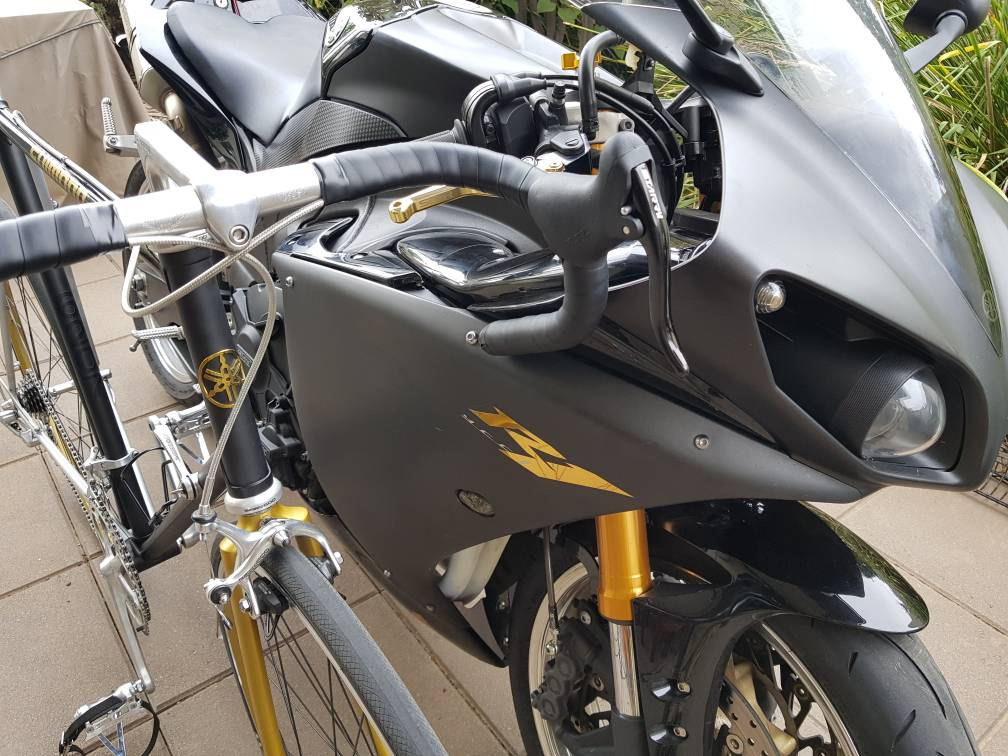
Here are 20 interesting things that you probably didn’t know about Yamaha. Although you have probably heard of Yamaha motorcycles, there is probably very little you know about the company that manufactures them. This Japanese company is now famous for manufacturing powerful bikes and for its involvement in major racing events around the world. However, it is for this product that they are now probably best-known around the world. While Yamaha has a long history, this hasn’t always involved the manufacture of motorcycles as this diverse company has been involved in many different ventures since the company was founded. Nowadays, it presented with simple lines of tuning fork enclosed in a circle and Yamaha inscription.Yamaha is now one of the most famous motorcycle brands in the world. In 2016, designers decided to create a single emblem. The standard version looks like special except the tuning forks on the background. Until 1998, there were two versions of the Yamaha Motor’s logo – the standard and special. In addition, the logo was completed with the company founder name. The very first emblem, which was printed on motorcycle models in 1966, looked like three tuning forks enclosed in a circle on a background.
#Yamaha tuning fork registration#
In 1916, the enterprise started using three tuning forks crossed together during registration of various trademarks companies producing musical equipment. They cut a circle on the «YamahaMotor» logo and they are enclosed in a circle on «Yamaha» logo. Today the difference in «YamahaMotor» and «Yamaha» logos is only in the position of the tuning forks. Three tuning forks symbolize a strong connection between technology, producing, and sales - three basic elements of the «YamahaCorporation». This unusual combination is simply explained. The modern Yamaha logo consists of three tuning forks and a name of the founder of the company written in Latin. In addition, designers created standard and special versions (with background or without).

Initially, the company used to sell musical instruments and had experience in manufacturing steel technologies. Only eight years later, in 1897, the company «NipponGakkiCo., Ltd.» was founded. The tuning fork is used for tuning organs and other musical instruments. This company worked in a sphere of music and was producing organs. The fact is that originally To Kasumi Yamaha founded a company in 1889 named «YamahaOrganWorks».

It is important to note the presence of the tuning fork on the logo of the company which doesn’t make a specialty of a musical sphere. Only one thing remained unchanged – three crossed tuning forks making a complex triradiate star. Years later the company grew strong and covered more and more segments of the world sales market. According to the corporate legend, they reflect three principles of Yamaha business - technologies, production, and sales. Since that time tuning forks became an essential element of the company’s logo. Instead of it, three tuning forks appear on the new logo. Thirty years later since the corporation establishment in 1927, the phoenix disappeared. This logo was approved almost immediately, a year after the company establishment in 1898. A tuning fork in the mouth (a symbol of the ultimate sounding) reflects all the difficulties and hardships the head of the concern had to face building his business step by step. It symbolized a firmness of spirit, work, perseverance, and pursuing the founder’s Torakusu Yamaha goals.

Initially, there must be a phoenix holding a tuning fork in its mouth on the «NipponGakkiCo., Ltd.» company’s logo (the name of the modern Yamaha company).


 0 kommentar(er)
0 kommentar(er)
